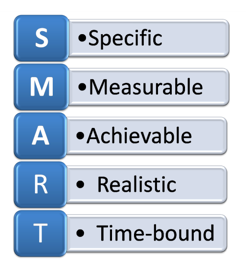 What Cognitive Therapy Says About Human Behavior
What Cognitive Therapy Says About Human Behavior
Cognitive Therapy (CT) states that our behavior is determined by how we think about things. Perhaps even more important, CT states that our emotions are often driven by our perceptions.
As sales professionals, our goal isn’t necessarily to get the prospect to express emotions. Instead, we should look for how to discover things that are important to him – perhaps some things that he didn’t even realize until the salesperson uncovered them. For instance, maybe you helped him see his problems or his condition from a new perspective; and maybe this caused some doubt in his mind about how he should proceed. Maybe you helped him see his problems at a deeper level, and he realized things were different than what he originally thought. That’s a form of cognitive therapy.
Now let’s take it a step further. The sales professional, in his role as cognitive therapist, can ask questions that shift the perspective of the prospect: “What are the alternatives? Will this be a waste of money? Can I put this off?” As we move through a process of questions and answers, we can help lower the prospect’s objections before we provide specific solutions.
Proceed from logic, and process map the question and answer session when you meet with the prospect. As you do this, you will see those things that are most important and unique to him or her.
What Cognitive Therapy Says About How People Decide
CT can tell us a lot about how people make decisions. Consider these three key principles:
- The way people perceive things affects how they feel and what they do.
- When you change how a person perceives things, you can change how they feel and what they do.
- When you learn how to develop a variety of facts, ideas and approaches, you can adapt to the situation and be more effective at influencing the buyer.
There is always more than one way of seeing things. It is important that we develop a wider range of perspectives as we interact with the buyer, and it’s helpful if we can be flexible as we deal with objections as they arise.
Thoughts and Feelings
Thoughts and feelings are linked; when we change one, we can change the other. Understanding that principle helps us become more effective in the sales process. Use a two-step process to help the prospect develop a new mindset:
- Identify what’s on the prospect’s mind and what they perceive from their current point of view.
- Find options that might create better feelings.
Let’s discuss this process in greater detail.
Questions Uncover Motivations
This process starts out by asking questions that uncover a person’s values and how they see themselves. Then we advance into a person’s state of logic – how they weigh pro’s and con’s.
We understand more by observing their personality (refer to Chapter 5 on DISC training). We adapt our questions until we discover what they really want, which includes much more than just the product or service we are selling.
For sales professionals, this mindset is revolutionary. It recognizes that selling starts with understanding how a person sees and feels. Once you understand a person’s point of view, you are better able to influence the way they think about their business and how they can take action to solve problems. People buy when their perceptions and feelings are in sync with how you present solutions.
You Are What You Think
The first step in understanding healthy thinking is the acknowledgment of reality. Reality is where we are at now – the circumstances we are dealing with; the way it is. Part of our reality was caused by fate or conditions beyond our control. For example, things like the weather, the economy or your genetics are beyond your control.
The other aspect of our reality is determined by how we think. Much of the way we think is influenced by our childhood, upbringing, experiences and conditions over time.
Some thoughts are right, some wrong. Some are positive, some negative. And sometimes we don’t think at all. The important thing is that by changing what and how we think we can change many circumstances. While we can’t control every thought that comes into our mind, we can control:
- how long we think about it
- how we think about it
- what to think about next
If we will consciously stop to think differently for the better, over time we can overcome many circumstances we want to change.
Cognitive Therapy and Sales
So how does this information apply to the sales process? Well, I believe these principles can be helpful for us both internally and externally. First, as individuals, we can use these principles to examine our internal thought processes and use that information to transform our beliefs and behaviors into successful habits. Second, as sales professionals, we can use this information to help influence the thinking of our prospects.
Exercises
Think of the following formulas that guide the behavior of individuals as well as corporations:
Thinking → Behavior → Results
Process & Methods → Action/Investment/Time → Results
Measured Results = Proof of Correct Thinking/Behavior
Documentation & Habits = Predictable Results
Now, think of the ways you can apply that knowledge to change your own habits, or to help change the mindset of your prospect.
- What negative perceptions or feelings am I holding on to that impact my performance or which cause bad habits?
- What can I do to change those perceptions? What reality do I need to accept so that I can begin to change?
- Are my current customers holding on to negative perceptions or feelings? For example, are they overly pessimistic about the industry, or unwilling to take reasonable risks?
- What can I do to change their perceptions so they can move in a positive direction?
- What information do my prospects need so they can see new realities, alternative ways of viewing things, or more positive options?
To learn more, contact me here or call 989-791-2475. We are happy to answer any questions you may have. You can also ask questions or leave your opinions in the comment section below. If you are able, please share this via social media (at the top) or visit us here:
Please join our community:



